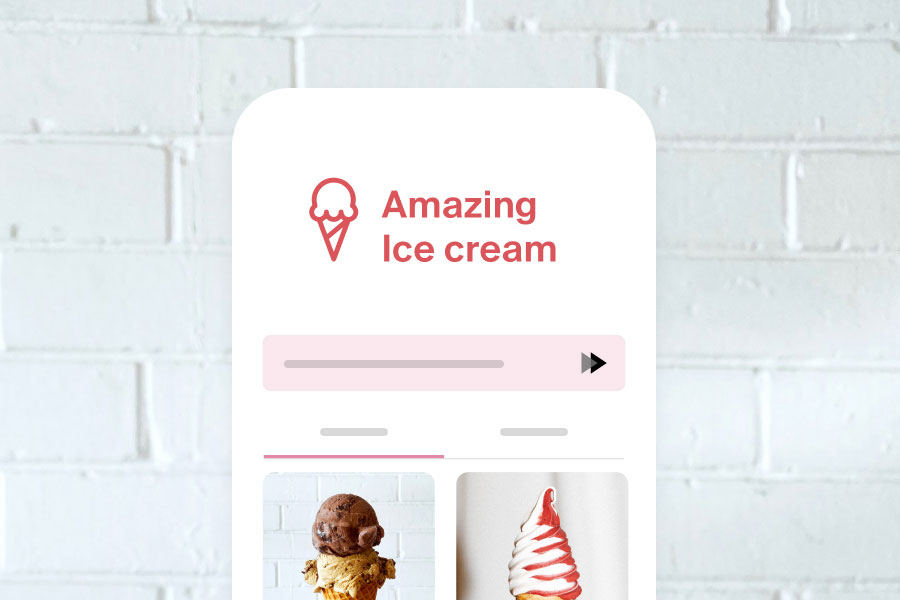Selling Online
9 Steps to an Effective Facebook Marketing Strategy for Restaurants
By Sarah Al-Waleed

In today's digital age, having a strong social media presence is essential for businesses of all sizes. And when it comes to social media marketing, Facebook is one of the most powerful platforms out there. With over 2 billion daily active users, Facebook offers businesses a massive audience to reach with their marketing message.
When used effectively, Facebook can be a helpful tool for spreading brand awareness and increasing your restaurant's sales. That's why developing a comprehensive Facebook marketing strategy that aligns with your overall goals should be top of mind for you.
Creating a Facebook marketing strategy might seem like a daunting task. There are so many things to consider, but don't worry; we're here to help. Here are some of the most important steps to creating a successful Facebook marketing strategy.
Steps to creating a successful Facebook marketing strategy for your restaurant
-
1. Optimize your restaurant's Facebook page
The first step to building a foolproof Facebook marketing strategy is making sure that your Facebook page is set up correctly. Your restaurant's Facebook page is the first thing potential customers will see when looking for your restaurant on Facebook. Therefore, it needs to communicate who you are and what you're offering clearly and concisely.
So, make sure your Facebook page is up-to-date. Include important information like your hours, address, and contact information. And try to upload some high-quality photos of your menu and restaurant interiors.
In short, take the time to turn your Facebook page into an accurate representation of your business. Only then will you be able to market your restaurant on Facebook successfully.
2. Define your objectives
What are you hoping to achieve with your Facebook marketing? Do you want to increase your brand's awareness? Boost your engagement rates? Drive up your sales? Once you've identified your goals, you can begin creating a plan to help you achieve them.
For example, suppose you want to increase brand awareness. In that case, you should focus on developing high-quality content that will appeal to your target audience and urge them to share it. Or, if you're looking to drive up your sales, you might want to focus on using Facebook ads to prompt more people to visit your restaurant's website.
It also helps if you start defining your goals in more specific, measurable terms. So instead of saying that your goal is to increase brand awareness, you could say that in two months' time, you'll have gained one thousand followers on Facebook.
That way, you will have set your goal in concrete numbers and made it easier to track and measure the success of your marketing efforts.
-
3. Identify your target audience
Once you've set your objectives, you need to identify your target audience. Learning more about your audience is essential for a successful Facebook marketing strategy. This is because it can help you create content that resonates with them and leads them to take action.
Facebook provides insights that give you an idea of your target audience's interests, preferences, and behavior. With this information, you can create relevant posts, write better captions, and find the best time to post.
For example, suppose you're a fast-food restaurant owner, and you learned that your target audience is particularly fond of gourmet cheeseburgers. In that case, you could create posts promoting your most relevant menu item.
Another example is if you knew your target audience was primarily online during the evening, you could schedule your posts for that time slot.
Knowing your target audience can help you create effective Facebook marketing campaigns that lead to tangible results.
4. Create a content strategy
Next, it's time to create a suitable content strategy to address your target audience. This involves brainstorming the type of content you want to share on Facebook, as well as the frequency and tone of that content.
When creating your content strategy, it's important to consider the different stages of the consumer buying cycle and to tailor the type of content you create to appeal to people at various stages of that cycle.
For example, suppose you're trying to build brand awareness for your restaurant. In that case, you'll want to share content that is interesting and engaging without being too sales-y. On the other hand, if you're running a promotion or an offer, you'll want to share content that encourages your followers to start an order on the spot.
Another vital aspect of creating a stellar content strategy is putting together a content calendar. Content calendars are typically built on a monthly or quarterly basis. They allow you to plan your posts ahead of time to maintain consistency and engage with your target audience regularly.
5. Post engaging content
One of the most critical aspects of Facebook marketing is creating engaging content that will capture your audience's attention. To do this, you'll need to obtain a thorough understanding of Facebook's content types and how best to use them to create content that is both relevant and interesting.
Every type of content format on Facebook can be used depending on how you want to engage your audience. For example, plain-text posts and status updates can be great for sparking conversation, asking questions, requesting feedback, and building connections with your followers.
On the other hand, photo and video posts can be excellent ways to grab people's attention, show off your brand, and prompt your followers to order from your restaurant.
And you could always enlist the help of Facebook's "Page Insights" feature to give you a quick rundown of how all your posts (both organic and paid) have been performing within a given period.
6. Interact with your audience
The point of social media marketing is for you to be exactly that: social. People love interacting with businesses online. In fact, 71% of consumers who have had a positive interaction with a brand on social media are likely to recommend the brand to their friends and family.
So don't shy away from interacting with your customers on Facebook. Check your page and accounts daily and respond to all comments, mentions, and messages, even if it's just by "Liking" them.
By interacting with customers through Facebook, you make them feel heard. And this step could go a long way in building positive relationships with them. It also increases the likelihood of them becoming repeat customers significantly.
7. Take a peek at your competitors
Researching your competition on Facebook can give you a good idea of what tactics they're using to reach their target audience. It can also help you identify areas where you may have an edge over them and keep you ahead of the game.
Suppose that one of your competitors regularly shares videos of their staff that are getting a lot of engagement. In that case, you may want to consider creating similar videos of your own.
Suppose that another one of your competitors is using professional photography to showcase their dishes and create mouth-watering visual posts. In that case, you should focus on upgrading the quality of your images to match or surpass that of your competitors.
There are two ways to keep tabs on your competitors on Facebook. You can regularly skim their feeds to try to compile enough information to divine their marketing strategy. Or, you can use Facebook's "Pages to Watch" feature.
"Pages to Watch" allows you to create a list of pages similar to yours and compare their performance to that of your business. This is an excellent tool because it gives you clear and concise metrics by which you can assess your page's performance compared to others.
These metrics can include your competitors' number of posts, Likes, and engagements within a given week.
8. Consider using Facebook ads
Facebook ads are an excellent way to reach people who may not be able to see your posts organically. They allow you to reach a wider audience and target specific demographics of Facebook users. And the best thing about Facebook ads is that they can be tailored to your specific campaign objectives.
Meta Ads Manager (formerly Facebook Ads Manager) divides your choices of Ad objectives into three categories: awareness, consideration, and conversion. Each category contains additional subcategories to be even more granular with your ad goals.
For example, let's say you just opened a new branch for your restaurant, added its location to your Facebook page, and now you want to get more people in the door. In that case, you can choose "Conversion" as your main ad objective and "Store visits" as your sub-objective.
In doing so, Facebook's ad algorithm will not only show your new-branch ad to your chosen demographics, but it'll also target users who reside in areas that are closest to your new branch's location. Now, that's a bullseye if you ask me!
And the beauty of Facebook ads is that they can be done on any budget you decide to put behind them. You just need to make sure that you've set the right goals for your campaign so that you can accurately assess its performance.
9. Run A/B tests
Crafting perfect content can be overwhelming, especially if you're new to Facebook marketing. You'll undoubtedly keep asking yourself, "What copy will resonate with my audience?" "What call to action will prompt them to place an order?" "Which visuals will grab their attention?" The only way to know for sure is to test.
Enter A/B testing, or as it's more commonly known, split testing. Split testing is a term used to describe the process of running marketing experiments on slight variations of your social media content to see which versions will lead to your desired results.
Let's say you're currently running a promotion on your menu starters, and it's a "buy one, get one" limited-time offer. So you decide to create a Facebook ad to get more people to take advantage of that offer and drum up new business.
Now, you have two different versions of the same ad. One with a "Start order" CTA button and the other with a "Call now" CTA button. Or one with your copy written in "Arial" font and the other in "Baskerville" font.
With A/B testing, you can separate your audience into two random groups. Each group is then shown a different version of your ad. After that, you can compare the responses to determine which version led your customers to take action.
A/B testing can save you a lot of time and money down the line because it helps you continually optimize your content. And it's important to note that you can get insights from A/B testing any type of content, not just ads.
Summary
Now that you have a general understanding of how to create a Facebook marketing strategy, it's time to put these steps into action.
Start by identifying your business goals and target audience. Experiment with different content formats, objectives, and posting times to see what works best for you. And remember to A/B test your content so you can continually optimize your posts for better results.
By following these simple steps, you'll be on your way to crafting a successful Facebook marketing strategy for your restaurant. Are you ready to get started?




